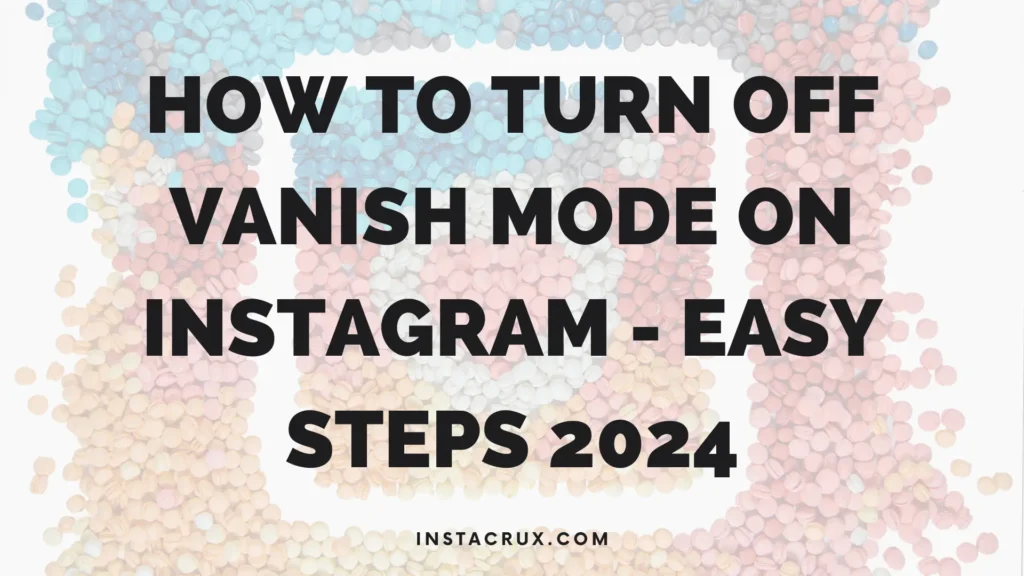In the ever-evolving world of Instagram, understanding the platform’s features is essential for optimizing your experience and managing your account effectively.
Among the various symbols and indicators Instagram users may encounter, the orange flag has raised questions recently.
This blog post will dive into the meaning, purpose, and implications of the orange flag on Instagram, helping you understand when and why it might appear and how to handle it.
Whether you’re a casual user, an influencer, or a business owner, this guide will offer valuable insights.
Understanding Instagram’s Flagging System
Before diving into the specifics of the orange flag, it’s important to grasp Instagram’s broader flagging system.
Instagram uses flags to alert users to various account issues or actions that may require attention. The most common types of flags on Instagram typically involve:
- Community Guidelines Violations: This includes content that violates Instagram’s rules, such as hate speech, explicit content, or spam.
- Security Alerts: Flags may indicate suspicious activity or breaches in your account’s security, prompting users to take action.
- Account Actions and Restrictions: Instagram may flag accounts for specific activities, including spam-like behavior, following/unfollowing excessively, or using unauthorized third-party tools.
Flags on Instagram often appear as visual cues in your account’s settings, posts, or DMs, and understanding their meaning can help ensure a positive user experience.
What Does the Orange Flag Represent on Instagram?
The orange flag is often perceived as a warning indicator, notifying users that their activity on Instagram is under scrutiny or requires attention.
While Instagram doesn’t officially define the orange flag in a uniform way across all accounts, it is most commonly associated with two key purposes:
Warning of Account or Content Violation
The orange flag may indicate a violation of Instagram’s Community Guidelines or Terms of Service.
Instagram uses both machine learning and human moderation to detect content or activities that breach its rules.
If an account is flagged with an orange indicator, it usually means that the user has violated a minor or first-time breach of the platform’s rules.
Violations that could trigger the orange flag might include:
- Spammy behavior: Excessive liking, following, or commenting in a short period.
- Inappropriate content: Posting content that could be flagged as harmful, misleading, or offensive.
- Account activity anomalies: Behavior that Instagram deems suspicious, such as using bots or excessive third-party engagement tools.
Read More: What Does TB Mean On Instagram?
Security Alerts
An orange flag can also act as a security alert on Instagram, indicating that the platform has detected unusual login attempts or potential hacking activity on your account.
If Instagram suspects that your account has been compromised, it may show an orange flag to prompt you to change your password or take other steps to secure it.
In both cases, the orange flag serves as a warning that users need to address the flagged issue to avoid further penalties, such as temporary restrictions or permanent account suspension.
How to Address an Orange Flag on Instagram?
If you notice an orange flag on your account, you should address it promptly to prevent further action from Instagram.
Here’s what you can do:
Review Instagram’s Community Guidelines
Start by reviewing Instagram’s Community Guidelines to ensure your content aligns with their rules.
If you think a post has been flagged in error, you can appeal Instagram’s decision. Take time to understand what kind of content is prohibited, such as spam, hate speech, or graphic violence.
Secure Your Account
If the flag relates to suspicious activity, follow these steps to secure your account:
- Change your password: Use a strong password, mixing letters, numbers, and symbols.
- Enable two-factor authentication (2FA): Add an extra layer of security.
- Review login activity: Check for any unrecognized logins in your account settings.
- Revoke third-party app access: Disconnect any apps that are no longer needed or seem suspicious.
Appeal Instagram’s Decision
If you believe the orange flag was applied by mistake, you can file an appeal with Instagram.
You can do this through the Support section in Instagram’s settings. Instagram’s team will review your case and provide feedback.
The Purpose and Use of Flagging Content on Instagram
Instagram’s flagging system is designed to help users and the platform maintain a safe and healthy community.
By flagging certain posts or accounts, Instagram can take action to remove inappropriate content or suspend harmful accounts.
Why Flag Content?
- Report harmful behavior: Flagging inappropriate content helps Instagram moderators review it and determine if it violates their community standards.
- Account security: Flags indicate that an account may have been compromised or that unusual behavior is occurring.
- Maintain a positive community: Flags are a part of Instagram’s efforts to monitor and enforce rules that foster healthy, respectful interactions.
The Benefits of Flagging and Managing Your Instagram Content
Flagging content, whether in your DMs or on posts, offers several advantages:
1. Prioritisation
Flagging important messages or posts helps prioritize crucial interactions and ensures that they don’t get lost amidst other content.
Whether you are running a business or simply managing personal interactions, this feature enables you to focus on what matters most.
2. Organisation
With the growing volume of messages, posts, and comments, flagging content makes it easier to stay organized.
Flagged content can be quickly accessed without scrolling through multiple messages or posts.
3. Follow-Up
If a message or post requires follow-up, the flag can serve as a reminder. For businesses or influencers, this feature ensures that no important communication is overlooked.
Flagging Feature: Differences Between Various Flags on Instagram
Instagram offers different flags depending on the type of content being flagged:
Flagging Posts vs. Flagging DMs
- Flagging Posts: When you flag a post, you are reporting it to Instagram for violating community guidelines, such as hate speech or explicit content. This results in a review by Instagram, which may lead to the post’s removal.
- Flagging DMs: The orange flag in DMs is a way for users to mark certain chats as important for later follow-up or prioritization. This flag doesn’t notify the other party and doesn’t involve community guidelines.
Red Flags and Yellow Flags
While the orange flag is a warning, other flags like red and yellow flags signal more severe issues, such as temporary action blocks or account suspension. It’s important to understand which type of flag you’re dealing with and take appropriate action.
Read More: What does BTS Means on Instagram?
How to Keep Your Account Safe from Flags?
To avoid flags that could lead to account restrictions, it’s important to follow Instagram’s guidelines and best practices:
- Avoid using bots: Relying on automation tools to generate likes or comments can trigger flags.
- Follow Instagram’s Community Guidelines: Ensure your posts adhere to the platform’s content standards.
- Stay within the engagement limits: Excessive liking, commenting, or following/unfollowing can appear spammy and result in flags.
Troubleshooting: Issues Related to the Orange Flag
If you’re encountering issues with the orange flag, such as it appearing without clear cause or not disappearing despite following guidelines, here’s what you can do:
- Update your Instagram app: Sometimes, bugs or glitches can cause issues with flags. Make sure your app is up to date.
- Clear app cache: On some devices, clearing the cache can resolve unexpected behaviors.
- Contact Instagram Support: If the issue persists, reach out to Instagram’s support for further assistance.
FAQs About the Orange Flag on Instagram
1. What is the orange flag on Instagram?
The orange flag on Instagram is typically a warning that your account or content has been flagged for violating Instagram’s guidelines or that suspicious activity has been detected.
2. What should I do if I see an orange flag?
Review your content to ensure it complies with Instagram’s Community Guidelines. If the flag is related to suspicious activity, secure your account by changing your password and enabling two-factor authentication.
3. Can the orange flag be removed?
Yes, you can resolve the issue by either appealing the flag or fixing the violation. Once the issue is addressed, the flag will be removed.
4. Does the orange flag affect my followers?
No, the orange flag is for your reference. The person you’re chatting with or interacting with won’t be notified about the flag.
5. Is the orange flag different from a report?
Yes, reporting content is when you alert Instagram about inappropriate material, while the orange flag is usually related to account or content issues that Instagram has flagged for your attention.
6. How can I avoid getting flagged?
Follow Instagram’s Community Guidelines, avoid spammy behavior (like excessive liking or following), and ensure your account is secure by using strong passwords and enabling two-factor authentication.
7. Can businesses use the orange flag feature?
Yes, businesses can use the flagging feature to prioritize customer service interactions and important communications within DMs.
Conclusion
Understanding the orange flag on Instagram is essential for both personal and business accounts.
It serves as a warning that your activity or content might not align with Instagram’s guidelines or security protocols.
Whether you’re addressing potential content violations or securing your account, taking swift action can help you maintain a positive and safe presence on the platform.
By staying aware of Instagram’s rules, securing your account, and flagging content when necessary, you can use the platform effectively and avoid issues related to flags.





